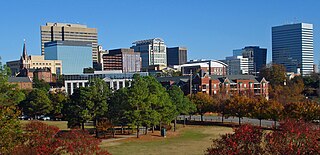
Columbia is the capital city of the U.S. state of South Carolina. With a population of 136,632 at the 2020 census, it is the second-most populous city in South Carolina. The city serves as the county seat of Richland County, and a portion of the city extends into neighboring Lexington County. It is the center of the Columbia Metropolitan Statistical Area, which had a population of 829,470 in 2020 and is the 7th largest urban center in the Deep South and the 72nd-largest metropolitan statistical area in the nation. The name Columbia is a poetic term used for the United States, derived from the name of Christopher Columbus, who explored for the Spanish Crown. Columbia is often abbreviated as Cola, leading to its nickname as "Soda City."
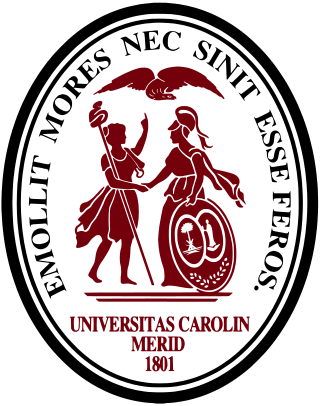
The University of South Carolina is a public research university in Columbia, South Carolina. It is the flagship of the University of South Carolina System and the largest university in the state by enrollment. Its main campus is on over 359 acres (145 ha) in downtown Columbia, close to the South Carolina State House. The university is classified among "R1: Doctoral Universities with Highest Research Activity". It houses the largest collection of Robert Burns and Scottish literature materials outside Scotland and the world's largest Ernest Hemingway collection.
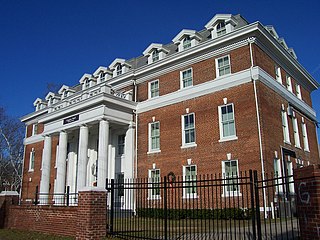
Allen University is a private historically black university in Columbia, South Carolina. It has more than 600 students and still serves a predominantly Black constituency. The campus is listed on the National Register of Historic Places as Allen University Historic District.

The South Carolina State House is the building housing the government of the U.S. state of South Carolina, which includes the South Carolina General Assembly and the offices of the Governor and Lieutenant Governor of South Carolina. Located in the capital city of Columbia near the corner of Gervais and Assembly Streets, the building also housed the Supreme Court until 1971.
Blue Sky is an American painter and sculptor best known for his mural, Tunnelvision.

Dreher High School is a co-educational four-year public high school in Richland County School District One located in Columbia, South Carolina, United States. Dreher, established in 1938, is one of the oldest public high schools in South Carolina. In 2022, Dreher was ranked the seventh-best high school in South Carolina and 1,017th in national rankings by U.S. News & World Report.

The South Carolina Governor's Mansion is a historic U.S. governor's mansion in the Arsenal Hill neighborhood of Columbia, South Carolina and the official residence of the governor of South Carolina. It is a Federal style home influenced by British Colonial plantations. The building has a white stucco exterior and originally served as faculty quarters for the Arsenal Academy, which together with the Citadel Academy in Charleston formed the South Carolina Military Academy. The Arsenal was burned along with the city of Columbia by Sherman's forces in February, 1865; the structure was the only surviving building and became South Carolina's executive mansion in 1868. On June 5, 1970, the building was registered with the U.S. National Register of Historic Places. The mansion is located on a single city block, and is surrounded by magnolia plants, elm and oak trees, and various other plants. It is accessed by a circular driveway around a fountain in front on the residence's main entrance. The building has a flat roof and a large central pavilion around the main entrance. The mansion has 15 rooms. It is located in Columbia Historic District I. The mansion is currently occupied by Governor Henry McMaster and his family.

The Old Campus District, University of South Carolina, is a historic district centered on The Horseshoe on the main campus of the University of South Carolina in Columbia, South Carolina. On June 5, 1970, it was listed in the National Register of Historic Places. On April 19, 1996 MTV Unplugged filmed Hootie & the Blowfish's concert on The Horseshoe before the release of their second album Fairweather Johnson.

The Chappelle Administration Building, on the campus of Allen University in Columbia, South Carolina, was designed by John Anderson Lankford, known as the "dean of black architects." The building name has been spelled Chapelle Administration Building in HABS and NPS reports. It was declared a National Historic Landmark in 1976, cited as one Lankford's most important works.

John A. Lankford, American architect. He was the first professionally licensed African American architect in Virginia in 1922 and in the District of Columbia in 1924. He has been regarded as the "dean of black architecture".

The South Carolina State Hospital was a publicly funded state-run psychiatric hospital in Columbia, South Carolina. Founded in 1821 as the South Carolina Lunatic Asylum, it was one of the first public mental hospitals established in the United States. The Mills Building, its first building, was designed by early American architect Robert Mills, and is a National Historic Landmark. The hospital had more than 1,000 patients in 1900, but with the transition of mental health facilities to community settings, it closed in the late 1990s. While buildings on the campus were temporarily used for inpatient services into the early 2000s, they were not part of the State Hospital, but other inpatient facilities of the agency. Several buildings on its campus housed offices and storage facilities of the state's Department of Mental Health until approximately 2014. In October 2014, the Department sold the first parcels of the property into private ownership and received the first sale proceeds. The William S. Hall Psychiatric Institute remained on the campus until 2015, when it moved to a new facility on Department's Northeast Columbia Campus. As of January 2021, 100% of the South Carolina State Hospital property had been transferred to private ownership. Proceeds from the sale of the Bull Street property must be used to benefit patients of the Agency. As of August 2020, the SC Mental Health Commission had authorized the expenditure of $10 million of the proceeds, $6.5 million, for the development of additional community housing for patients.
William Augustus Edwards, also known as William A. Edwards was an Atlanta-based American architect renowned for the educational buildings, courthouses and other public and private buildings that he designed in Florida, Georgia and his native South Carolina. More than 25 of his works have been listed on the National Register of Historic Places.
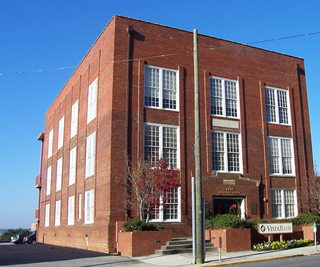
The South Carolina State Armory, built in 1905, is an historic National Guard building located at 1219 Assembly Street near the State House in Columbia, South Carolina.

The Walhalla Graded School, built in 1901, is an historic building located at 101 E. North Broad Street in Walhalla, South Carolina. It was designed by noted Columbia architect William Augustus Edwards of the firm of Edwards and Walter and built by Grandy & Jordan of Greenville.

The Withers Building, also known as the Winthrop Training School or W.T.S., is an historic building complex located at 611 Myrtle Drive on the campus of Winthrop University in Rock Hill, South Carolina. The complex consists of three parts: the old Presbyterian High School, the Main Classroom - Office Building and the new Gymnasium.

Olympia Armory is a historic National Guard armory located at Olympia, near Columbia, Richland County, South Carolina.
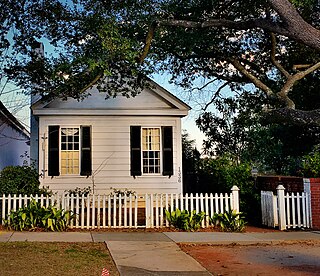
The Zimmerman School is a historic school building located at Columbia, South Carolina. It was built in 1848, and is a small Greek Revival style one-story clapboard building with a gable roof. The school was built by Charles and Hannah Zimmerman, who operated it from 1848 to 1870, and also built the neighboring Zimmerman House.

The 2019 South Carolina Gamecocks football team represented the University of South Carolina in the 2019 NCAA Division I FBS football season. This season marked the Gamecocks 126th overall season, 28th as a member of the SEC East Division. The Gamecocks played their home games at Williams–Brice Stadium in Columbia, South Carolina, and were led by fourth-year head coach Will Muschamp.

Fitz William McMaster was an American lawyer and politician.























